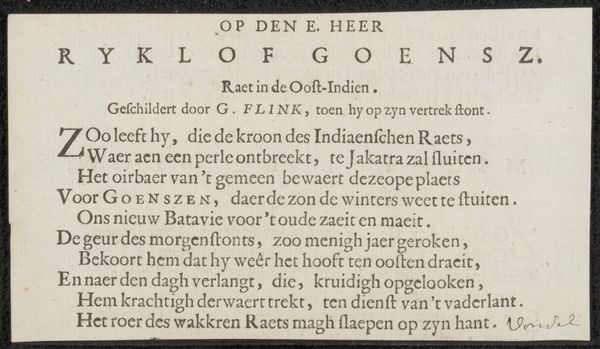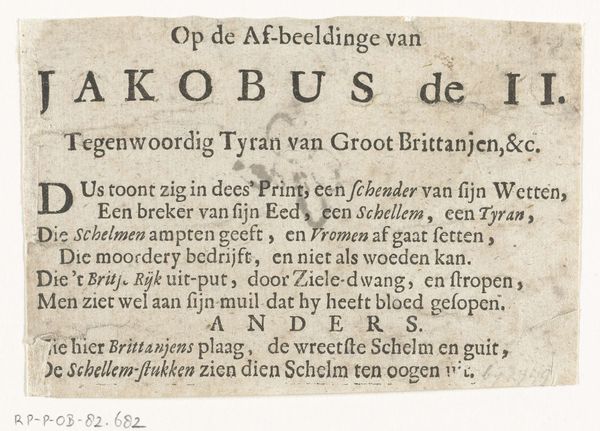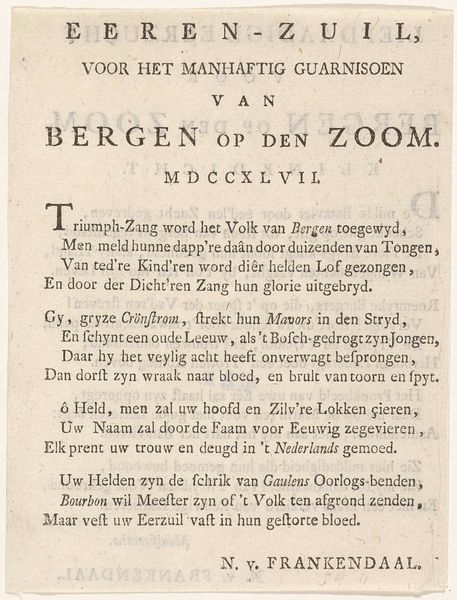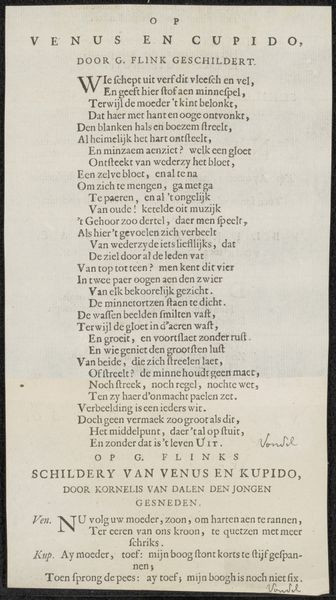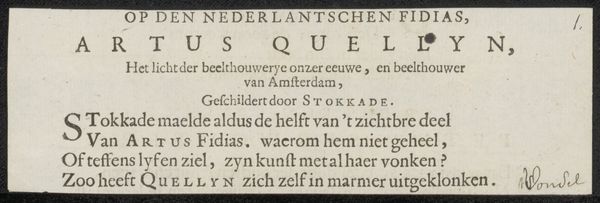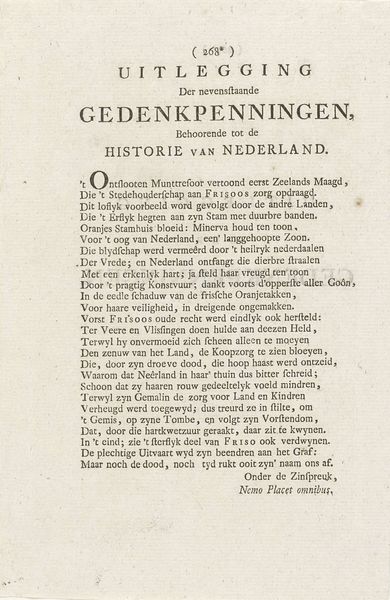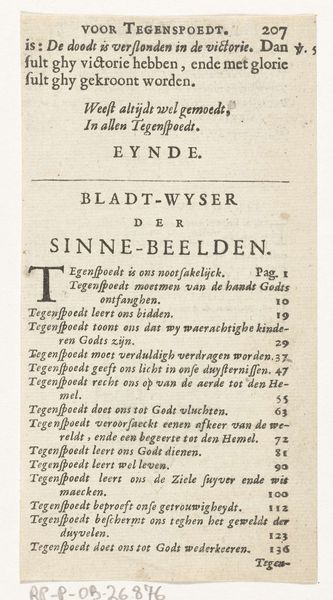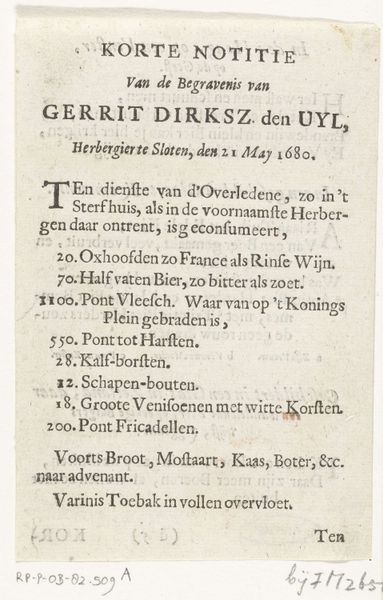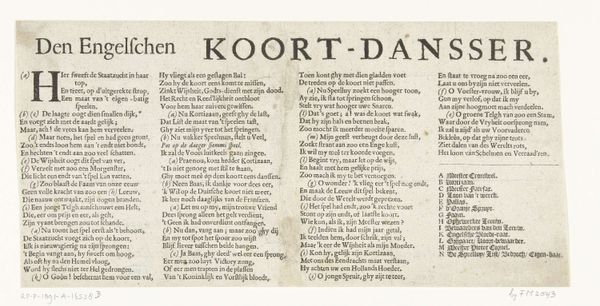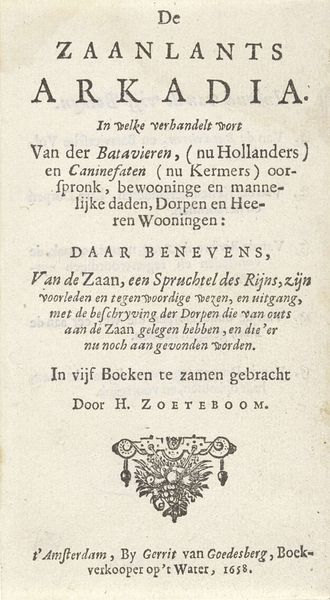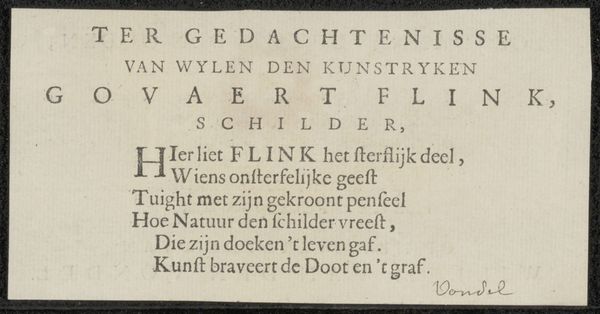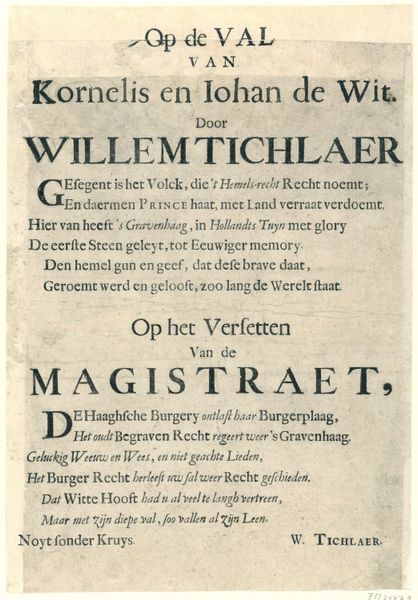
graphic-art, print, typography
#
graphic-art
#
aged paper
#
script typography
#
hand-lettering
#
dutch-golden-age
# print
#
hand drawn type
#
hand lettering
#
typography
#
hand-drawn typeface
#
stylized text
#
thick font
#
handwritten font
#
columned text
Copyright: Rijks Museum: Open Domain
Curator: Here we have “Gedicht op Karel van Mander,” a print created in 1657. It's currently held at the Rijksmuseum. Editor: My initial reaction is that it looks meticulously ordered, but with an archaic script that hints at something beyond its time. It feels both ancient and immediate. Curator: This is a poem by Joost van den Vondel, dedicated to the artist and writer Karel van Mander, known particularly for his "Schilder-boeck" or "Painter's Book.” Vondel, a prominent figure in the Dutch Golden Age, used his poetry often in service of commemorating important figures in Dutch art and culture. Editor: Right. So we’re looking at typography as much as a piece of literature. The dense blocks of text give a sense of formality and permanence. It almost reads like an inscription. How does Vondel use the poem itself to add to van Mander's cultural legacy? Curator: Vondel elevates van Mander by linking him to classical ideals with the phrase “Sic itur ad astra,” or "Thus one goes to the stars,” indicating van Mander's immortal status through his work. This ties into a larger theme of Dutch Golden Age art—the celebration of artistic and intellectual achievement within a relatively new national identity. The "Painter’s Book," being referenced, helped instruct a generation in the field and set new principles, so memorializing him like this has political weight. Editor: I can see how the poem acts as a monument of sorts. The even, regimented columns evoke a sense of classical architecture, giving form to the artist's impact. I noticed too, the lettering, although formalized, seems individually rendered, implying a connection to manual skill and craftsmanship. Curator: Exactly. And its very existence as a print allows for the wider dissemination of van Mander’s ideas, ensuring his legacy within artistic circles. This connects art with social accessibility, an evolving attitude at the time. Editor: It's fascinating to see how Vondel's tribute has created yet another layer in interpreting van Mander. In some ways, it gives the printed words, like the paint van Mander put on his canvas, more aesthetic texture. Curator: It highlights how texts can perform different roles in culture at the time; instruction, art, even propaganda. Editor: Indeed. Now I view its impact beyond what van Mander accomplished, but as something being continually remade by each era engaging with his legacy.
Comments
No comments
Be the first to comment and join the conversation on the ultimate creative platform.

